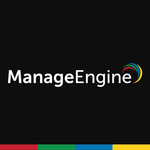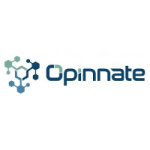What is our primary use case?
Our primary use case is firewall automation. We use SecureTrack and SecureChange. We have distribution serves, Remote Collectors, but what we primarily use is SecureChange integrated with ServiceNow for users to submit firewall requests. They then go to SecureChange which designs the rules and implements them.
How has it helped my organization?
When it comes to the turnaround of firewall rule requests, it used to take about a week to implement and have the customer test for firewall access. Now, it can take just one day. The implementation itself takes a minute or two. For the customer, it may take the rest of the day, by the time that the policy is installed and the customer tests, either that evening or the next day.
While I'm not involved in the leadership, I believe the solution has helped us to meet our compliance mandates: from a firewall perspective, as well as an audit perspective, as well as review of the rules and source and destination port requests.
As for ensuring that security policy is followed across the entire hybrid network, we're getting there. That's part of why we implemented Tufin. We are implementing that across our multiple offices. Once we get to that state, it will ensure that security policy is followed.
Finally, using the solution, our engineers are spending less time on manual processors.
What is most valuable?
In general, the automation piece is the most valuable feature: having SecureChange make the change on the firewalls, instead of my having to go manually make the changes on the vendor product.
In terms of cleanup of our firewall policies, we don't officially use Tufin, but I, as an architect, do use the Automatic Policy Generator to review existing rules: high hit-count rules and open rules which aren't very secure. We use that to then build firewall rules which tighten up our firewall policy.
The change workflow process is flexible and customizable. We have had to edit and alter some of our workflow and it's pretty easy, pretty simple, pretty straightforward. We use Tufin support, their helpdesk, for that because we're a very new customer.
What needs improvement?
In terms of the visibility the solution provides, we have hits and misses with it. Overall, we think it works. We would like to get more automated, but that could be an issue internally with services and ports that we allow between different zones and our USP matrix. We're working with Tufin representatives to help solidify that and clean that up a little bit. That's one of the headaches and hiccups that we have right now: the full automation piece. We have automation to an extent, but we still have requesters who submit requests that still require approval, whether it be firewall leadership approval or cyber leadership approval. We want to determine what ports are allowed between the zones, as I mentioned, so that we can have full automation and there's no human interaction at all.
We would like to see automation metrics, from a reporting standpoint. We would also like to see automation of site-to-site VPN tunnels. We would like to see automation of Check Point application-based firewall rules. That's available on the Palo Alto side, but we are primarily a Check Point site on-prem. We have Palo Alto on the cloud but most of our on-prem stuff is from Check Point, so we're waiting for that. Those are some of the key things we're waiting for.
For how long have I used the solution?
We've been using Tufin for about four months.
What do I think about the stability of the solution?
My impression of the stability is positive. We haven't had any issues. We even went through an upgrade about a month ago and it was a smooth process.
What do I think about the scalability of the solution?
As for scalability, we're finding that out right now. We're building out two new Remote Collectors for our global deployment of an additional 150 to 180 firewalls, plus additional Layer 3 appliances. We're working through that right now. Hopefully, it will be a smooth transition but I can't say for sure because we haven't actually implemented it yet.
How are customer service and support?
I would rate tech support as "fair." Response time is a little slow, but when they do respond, and when time is available for them, we work through things pretty quickly to resolution.
How was the initial setup?
I wasn't involved in the initial setup, but from what I've heard from others from whom I took it over, it was very straightforward.
Which other solutions did I evaluate?
I know they reviewed other solutions but I don't know which, for sure, since I inherited the project. I would assume AlgoSec and FireMon were reviewed as well.
What other advice do I have?
Be as detailed as you can within your introductory meetings, and your planning and implementation phases, because if you don't mention something and it comes back later, you're going to have to work through it. That could take time, it could take extra money. You want to make sure, upfront, that you know everything you want to do so that it's all included in the cost for the Professional Services implementation.
We do use it on the cloud; we're having some trouble right now defining the network policy on our cloud. We're working through that; it's part of being a new client.
I would rate Tufin a seven out of ten. We're a very large, complex organization, so we're still working through some stuff that we focus on, things that, perhaps, other customers don't, or that Tufin doesn't have integrated in the TOS software.
Disclosure: PeerSpot contacted the reviewer to collect the review and to validate authenticity. The reviewer was referred by the vendor, but the review is not subject to editing or approval by the vendor.












